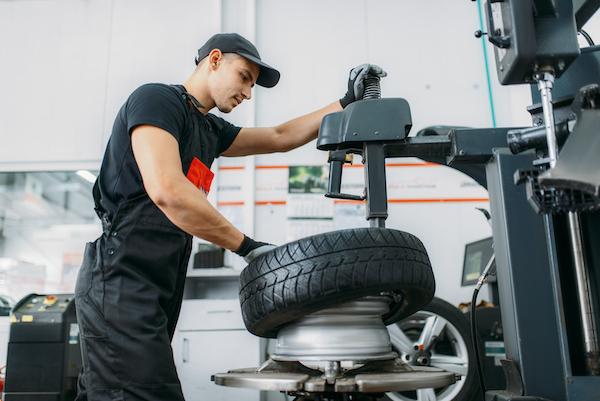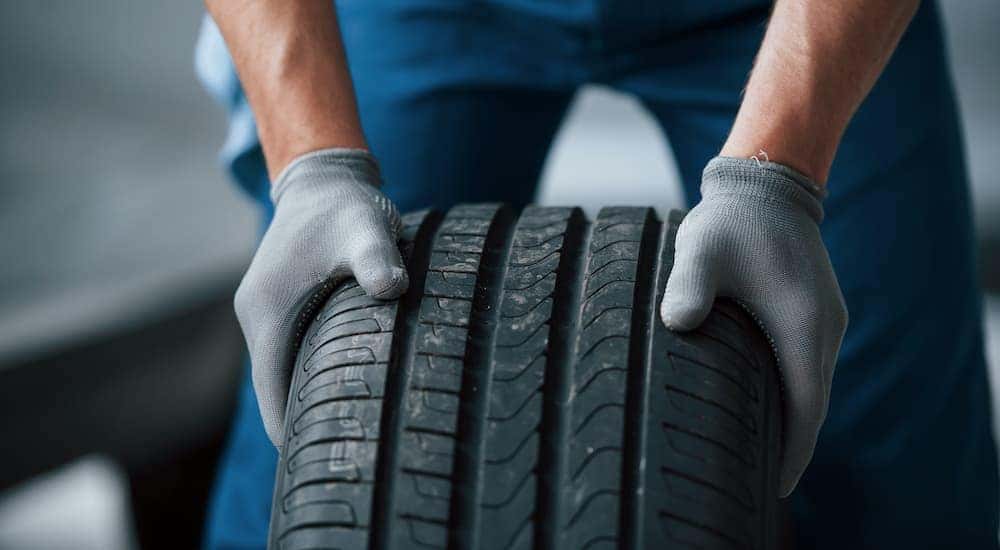Tire Repair Myths Debunked: Separating Fact From Fiction
In the world of automobile maintenance, tire fixing holds a considerable location, yet it is often shrouded in misconceptions and mistaken beliefs that can lead to confusion for vehicle proprietors (tire shop near me). From the mistaken beliefs bordering patching versus plugging a punctured tire to the efficiency of various tire sealants, there are several key areas where quality is needed to make educated decisions.
Typical Tire Repair Service Misconceptions
Eliminating common mistaken beliefs bordering tire repair work is vital for maintaining road safety and prolonging the longevity of your automobile's tires. One usual misconception is the belief that a punctured tire is past repair work and has to be replaced completely. Actually, lots of punctures can be properly repaired by an expert, following market standards. It is vital to understand that not all punctures are created equal; while some may indeed require a tire replacement, the bulk can be safely repaired.
An additional misconception is the idea that a do it yourself tire repair service kit is a sufficient remedy for all tire problems. While these kits can be convenient for short-lived fixes in emergencies, they are not an irreversible remedy and might not deal with the underlying issue (morris tire). Seeking the knowledge of a certified tire professional is constantly suggested to ensure the safety and security and stability of the tire

Can You Repair a Punctured Tire?
Fixing a pierced tire is an usual practice in the auto industry, typically brought out by professional specialists complying with certain standards and requirements. Punctures found on the walk area of the tire are normally repairable as lengthy as they are within a specific size limit and do not affect the tire's architectural honesty.
It is necessary to note that penetrates near the sidewall or shoulder of the tire are usually not repairable because of safety issues. Such areas go through substantial stress and flexing, making repair work undependable and potentially hazardous. Furthermore, if the leak is as well big, exceeding the suggested repairable dimension, or if the tire shows indications of inner damages, it is safer to change the tire altogether.
The Truth About Patching Vs. Connecting
When considering the repair service of a pierced tire, recognizing the distinctions in between patching and plugging is vital for making informed decisions pertaining to tire upkeep and safety. Covering entails fixing the tire from the within, where a spot is applied to cover the leak. This technique is considered more trustworthy and long-lasting as it deals with the damages inside, decreasing the danger of air leak and more tire damage. On the other hand, connecting is a quick repair that entails placing a rubber plug right into the punctured area from the exterior. While connecting is practical and can be done without removing the tire from the edge, it is usually taken into consideration a momentary option and may not offer the very here are the findings same degree of sturdiness as a spot.
Myth: All Tire Sealers Are Reliable

When choosing a tire sealer, consider variables such as the dimension of leaks it can successfully repair, compatibility with tire pressure tracking systems (TPMS), and whether it is risk-free for the tire material. Bear in mind, while tire sealers can be useful in emergency situations, they are not an alternative for appropriate tire care and maintenance.
Finest Practices for Handling Apartment Tires
Due to the varying effectiveness of tire sealers, comprehending ideal techniques for managing level tires is important for keeping roadway safety and security and lorry performance. When experiencing a puncture, the very first step is to securely pull over to the side of the road, far from oncoming website traffic. Switch on risk lights to notify various other drivers of your scenario. It is advised to use the parking brake and place wheel wedges under the tires to stop the vehicle from rolling. Next off, consult your car's guidebook to situate the spare tire, jack, and lug wrench. Prior to trying to transform the tire, make certain that the location is level and stable. Loosen the lug nuts, elevate the vehicle with the jack, eliminate the lug nuts and puncture, and replace it with the spare tire. Tighten the lug nuts in check this a celebrity pattern, lower the vehicle, and firmly tighten the lug nuts. Finally, store away the flat tire, tools, and equipment, and keep in mind to examine the spare tire's pressure regularly. Following these ideal methods can help you take care of punctures efficiently and securely.
Final Thought
To conclude, it is crucial to different fact from fiction when it involves tire repair work misconceptions. Understanding the reality about patching vs. connecting, the effectiveness of tire sealants, and finest practices for dealing with punctures can help make sure the safety and security and durability of your tires. By unmasking common false impressions and complying with correct repair guidelines, you can make educated choices when it concerns keeping the health of your car's tires.